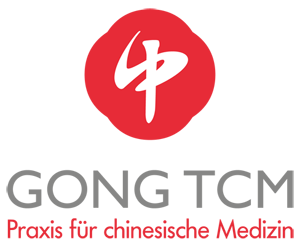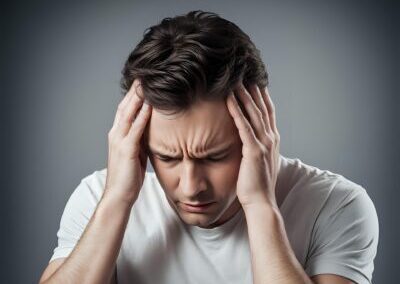Home – Areas of Treatment – Pain
Migraine
The cause of migraines is unclear. A hereditary predisposition certainly plays a role in their development. Today, an organic cause is assumed. Migraine attacks are triggered by certain foods, alcohol or medications, hypoglycemia, psychological factors, physical influences (noise, flickering light, etc.), or menstruation. The main symptom of migraine is headache, accompanied by autonomic symptoms such as nausea and vomiting.
Migraine headaches are often located on the side of the head.
Since Chinese medicine, the gallbladder meridian encircles the side of the head, headaches are associated with the gallbladder. It is usually due to a disharmony in the gallbladder, which triggers the headache and simultaneously affects other organs such as the stomach and spleen. TCM attempts to eliminate internal disharmony by regulating the gallbladder. At the same time, migraine triggers should be identified and avoided.
Trigeminal Neuralgia
Trigeminal neuralgia is a pain disorder in the area supplied by the trigeminal nerve (encompassing the entire face) that almost exclusively affects people over 50 or patients with pre-existing neurological disorders. The causes of trigeminal neuralgia are still unclear in conventional medicine. The upper or lower jaw is usually affected. Symptoms include sudden, tearing pain, triggered by certain movements such as chewing or speaking, but also by lightly touching certain parts of the face.
From the perspective of Chinese medicine, pain is always a blockage of Qi or blood in the affected organ or meridian system. Important for the Chinese diagnosis are the location and spread of the pain, any accompanying symptoms, and the triggering factors. Treatment is individually tailored and can help reduce attacks and alleviate accompanying symptoms.
Osteoarthritis
Osteoarthritis is a painful, degenerative joint disease characterized by destruction of the articular cartilage and inflammation of the inner lining of the joint capsule, which can lead to complete stiffening of the joint. In older people, the hip and knee joints are primarily affected. The cause of osteoarthritis is a mismatch between the load-bearing capacity of a joint and its actual load. Typical of osteoarthritis is the so-called “starting pain,” although the pain subsides with increasing movement. Therefore, it is important not to allow the affected joint to remain in a resting position, but to move it.
In TCM, a main mechanism is the stagnation of Xue (blood) due to a cold-bi syndrome. Treatment consists of locally moving and warming the blood and Qi. Weight loss (if overweight) and exercise of the affected joint are also recommended. Arthritis
Inflammation of the inner lining of the joint capsule is usually accompanied by redness, pain, swelling, and restricted movement, as well as possibly joint effusion. Arthritis can have multiple causes and is clearly distinguishable from osteoarthritis. The pain in arthritis is usually constant, and it is recommended to rest the joint.
According to Chinese medicine, this is caused by what is known as Heat Bi Syndrome. The heat reflects the inflammation in the joint and leads to stagnation of Qi and blood in the affected area. Cooling agents, as well as harmonizing Qi and blood flow, can provide relief. As mentioned above, the joint should be rested.
Pain in the musculoskeletal system (neck, shoulder, elbow, lower back, hip, knee, and foot)
Pain is always subjective and can have many causes. Pain is usually caused by tension, trauma, swelling, or misalignment due to excessive strain.
Pain is always the result of Qi or blood stagnation. The treatment strategy is individually tailored depending on the affected area, the nature of the pain, and the triggering factors. Harmonizing the blood and Qi flow is the primary goal. Applying heat during a moxa treatment can also help relieve symptoms.



